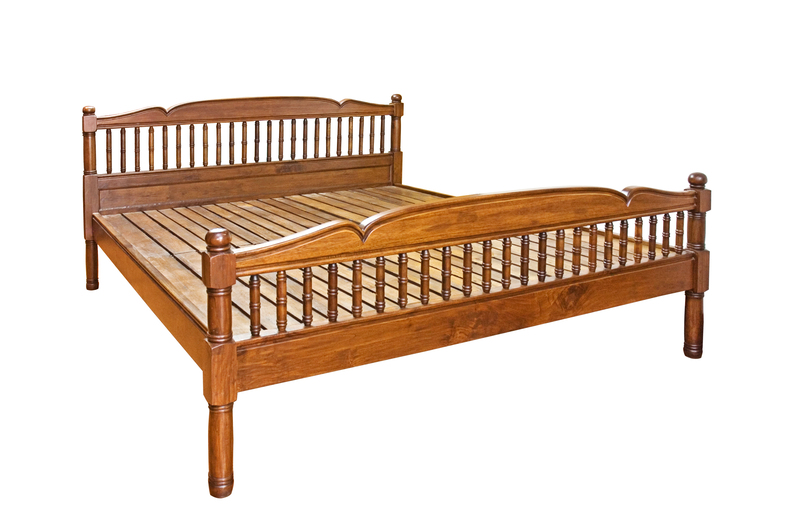From Junk to Gems: Inspiring Upcycling Ideas for Eco-Friendly Living
Eco-friendly living can start with a simple idea: what if we saw potential in our everyday trash? Welcome to the world of upcycling -- the creative process of turning what we might call "junk" into valuable, beautiful, and useful items. In this comprehensive guide, we'll dive into expert tips, unique projects, and real-life inspiration to help you transform waste into wonders, supporting a more sustainable lifestyle and a healthier planet.
Understanding Upcycling: What It Means and Why It Matters
Before we explore creative ways to upcycle, let's clarify the difference between recycling and upcycling, and why the latter is so important in our fight against environmental degradation.
Recycling vs. Upcycling
- Recycling is the process of breaking down materials and remanufacturing them into new products. For example, recycling plastic bottles into new plastic containers.
- Upcycling keeps waste out of landfills by reusing objects or materials in a way that creates a product of higher quality or value than the original. Example: turning glass jars into stylish home decor.
By giving unwanted items a second life through upcycling, we reduce waste, conserve resources, and spark creativity. It reflects conscious consumerism--where every purchase and project can become an act of environmental stewardship.

Top Benefits of Upcycling for Eco-Friendly Living
Upcycling is about much more than crafting. Here are key benefits for you and the planet:
- Reduces landfill waste and extends the life of materials.
- Conserves natural resources that would be needed for new production.
- Decreases pollution by minimizing waste incineration and chemical processing.
- Saves money and encourages creativity -- DIY upcycling projects are often low-cost or free!
- Promotes unique, personalized style in your home or wardrobe.
Incorporating upcycling into daily life can have a profound impact--helping to foster a culture of reuse and sustainability, one project at a time.
Creative Upcycling Ideas to Get You Started
This section covers a wide range of upcycling projects for beginners and seasoned DIY enthusiasts alike. Each idea transforms the ordinary into the extraordinary, inspiring greener, more resourceful living.
Upcycling Old Clothes: Fashion Forward, Waste Backward
- T-shirt Tote Bags: Old cotton t-shirts make fantastic reusable grocery bags. Simply cut off the sleeves, open the neck, and stitch or tie the bottom to create a simple, sturdy tote.
- Denim into Stylish Accessories: Cut-off legs from worn-out jeans can become chic clutch purses or funky wine bottle carriers.
- Sweater Pillowcases: This cozy project turns faded sweaters into soft and stylish cushion covers for your sofa or bedroom.
- Quilted Memory Blankets: Gather scraps from favorite shirts and dresses to sew a quilt full of memories--both functional and heartwarming.
Upcycled Furniture: Transforming Trash into Treasure
- Pallet Wood Projects: Pallets are the goldmine of the upcycling world. You can build coffee tables, outdoor benches, or even wall art. Sand, paint, or stain to match your home aesthetic.
- Repurposed Drawer Shelves: Old dresser drawers can be painted and mounted as shadowbox shelves--ideal for decorative displays or extra storage.
- Vintage Suitcase Side Tables: Stack two suitcases and add legs for a quirky, retro nightstand.
- Chair Planters: Broken or wobbly chairs can be painted and repurposed as whimsical garden planters for flowers and herbs.
Upcycled Home Decor: Personalizing Spaces and Saving the Planet
- Glass Jar Lanterns: Turn empty jars into glowing lanterns for patios by adding candles or battery-powered lights.
- Pallet or Ladder Bookshelves: Reclaim old ladders or sections of pallets for a rustic book or plant shelf.
- Bottle Cap Art: Collect colored bottle caps to create unique mosaics, magnets, or even tabletop designs.
- Wine Bottle Vases: Upcycle glass bottles as sleek flower vases--customize them with twine, paint, or beads.
Kids' Upcycling Projects: Start Them Young
- Egg Carton Critters: Color and cut old egg cartons into caterpillars, flowers, or fun animal masks.
- Milk Jug Watering Cans: Poke holes in the lid of a clean milk jug to make a mini watering can for young gardeners.
- Toilet Roll Binoculars: Tape or glue two cardboard rolls together and decorate for instant playtime adventure gear.
- Tin Can Drums: Stretch balloons or fabric over open cans for a simple, musical instrument--great for hands-on learning and fun!
Seasonal and Holiday Upcycling Inspirations
Embrace upcycling year-round with themed ideas that add festive flair without extra waste.
- Holiday Wreaths made from plastic bags, fabric shreds, or even wine corks can be customized for every season.
- Easter Egg Holders crafted from cut paper tubes or old CD cases keep traditions eco-friendly.
- Halloween Costumes constructed with old clothes, cardboard, and bottle caps are fun, creative, and sustainable.
- Holiday Gift Wrap from newspaper, maps, or leftover fabric is both unique and environmentally conscious.
Upcycled Gardening: Greener Gardens, Greener Planet
Gardening lends itself perfectly to upcycling, offering limitless opportunities to reuse materials for planters, markers, and more.
- Tin Can Herb Gardens: Paint empty cans and plant kitchen herbs for your windowsill. Attach them to wooden boards for vertical gardening.
- Plastic Bottle Seed Starters: Cut bottles in half, fill with soil, and watch your seedlings grow. Add drainage holes for healthy roots.
- Wine Cork Plant Markers: Write plant names on corks, insert a skewer, and label your garden in style.
- Broken Pot Fairy Gardens: Stack and arrange broken terracotta pieces to craft whimsical fairy landscapes.
How to Start Upcycling: Tips for Success
Eco-friendly upcycling is easy to begin--just follow these practical steps:
- Take Inventory: Notice what you throw away most. Glass, plastic, fabric, metal, and cardboard are all upcycling candidates.
- Gather Inspiration: Browse online platforms, magazines, and social media hashtags like #upcycledliving for fresh ideas.
- Start Simple: Try an easy project first (like a jar lantern) before advancing to complex furniture or large decor items.
- Embrace Imperfection: DIY upcycling is about creativity, not perfection. Personal touches and quirks add charm.
- Involve Family or Friends: Upcycling together is not only fun, but builds environmental awareness and cooperation.
Tip: Maintain an upcycling "stash" or box where you collect reusable materials--well-organized supplies can spark unexpected project ideas!
Upcycling as a Community Movement
From local art collectives to large-scale city programs, upcycling is gaining momentum worldwide. It's more than a personal hobby--it's a community movement that promotes environmental awareness, supports local economies, and inspires positive change. Here's how you can participate:
- Attend upcycle workshops or classes at community centers or maker-spaces.
- Organize swap meets for secondhand or upcycled goods.
- Support artists and businesses who prioritize reclaimed materials.
- Volunteer in neighborhood clean-up and art projects that incorporate repurposed items.
- Share your upcycling successes and challenges on social media to motivate others.
Sourcing Materials: Where to Find Hidden Treasures
- Thrift stores and flea markets are goldmines for upcyclers--hunt for unique furniture, fabrics, and glassware.
- Online marketplaces (like Freecycle, Craigslist, or Facebook Marketplace) often feature free or low-cost items looking for a new home.
- Neighborhood "curb alerts" are perfect for snagging discarded furniture and building supplies.
- Home and office clear-outs may yield an abundance of usable materials: jars, boxes, electronics, and more.
Always collect and transport materials safely; clean and disinfect items before commencing your eco upcycling project.
Upcycling Your Mindset: Embracing a Green Lifestyle
Adopting an upcycling lifestyle brings creativity, sustainability, and savings into your daily routine. Beyond projects, it means viewing discarded items as potential resources, and cultivating a mindset grounded in resourcefulness and environmental responsibility.
Upcycling isn't just about making beautiful things--it's about making a difference. By reimagining our waste, we conserve energy, reduce pollution, and inspire others to take small steps toward a cleaner world.

Upcycling FAQs: Your Questions Answered
Is upcycling cost-effective?
Absolutely! Most upcycled projects can be started with little or no budget, using materials you already own or can get for free. Upcycling helps you save money while adding value to your life.
Is upcycled stuff safe to use?
Safety is crucial. Always clean and disinfect items--especially food containers, wood, and fabrics--before upcycling. Avoid using toxic materials (like lead paint or treated woods) in projects involving food, drink, or young children.
How can I find more upcycling inspiration?
Online communities, Pinterest boards, YouTube tutorials, and eco-focused blogs provide endless upcycling ideas.
Conclusion: Turn Your Junk into Everyday Gems
Transforming junk into gems is more than a trend--it's an empowering way to lead a more sustainable, eco-friendly lifestyle. Upcycling unleashes creativity, saves money, and champions environmental responsibility. From repurposed home decor and reinvented clothing to garden projects and seasonal crafts, the possibilities for eco upcycling are nearly infinite.
Start your journey today--look at the next item you plan to throw away and imagine its potential. With a little imagination and effort, you can turn the ordinary into the extraordinary, one upcycling project at a time. Together, let's make eco-friendly living a way of life!
